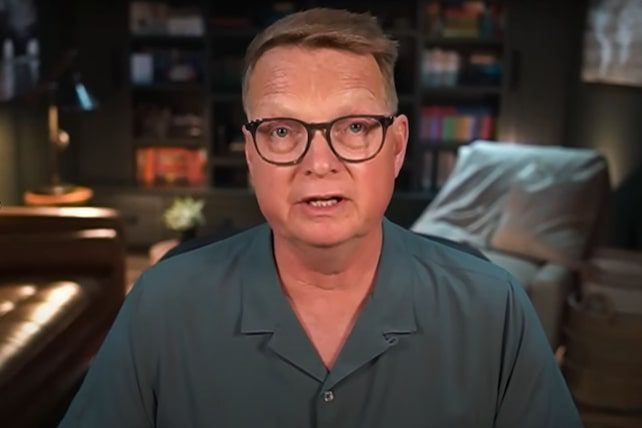“Finally, in a world of deep fakes and digital facades, I think being fully human becomes your unfair advantage,” said Nieuwhof. “Authenticity becomes the church’s superpower and your superpower.”
How then can pastors be appropriately vulnerable with the people they lead? Nieuwhof explained a framework based on the words “wound, scab, scar.”
“[Similar to] your physical body as it heals, your emotional and spiritual life have stages of healing,” Nieuwhof said. “And every stage will show you whether it’s time to share or whether it’s time to stay silent.”
Nieuwhof advised pastors who are dealing with active wounds not to talk about the wounds with their congregations but to process those challenges with close friends, with a therapist, or in a setting such as his Art of Leadership Academy. “Wounds are fresh,” he explained. “They’re raw. You’re in it. You’re not healed. You’re not even healing yet.”
Examples of active wounds could include serious marital problems, depression, or “your staff is falling apart.”
RELATED: Terry Crews Tells Carey Nieuwhof: My Marriage Is ‘An Example of a Miracle’
“Don’t preach your wound. Process it. Wounds are for your counselor, okay? They’re for your inner circle. They’re for your best friend,” said Nieuwhof. “They’re not for your congregation. Because when you bleed publicly, you’re asking people to hold you together, right? And that’s not fair to them.”
Wounds can have varying degrees of severity, but the point is that pastors should process their wounds in a “safe place,” not with the people they’re leading.
Carey Nieuwhof: Scabs and Scars
“Scabs” refers to wounds that are beginning to heal but are still tender. Nieuwhof recommends caution in sharing about areas of life that are scabs. “In the scab stage, it looks like things are getting better, right? It’s healing,” he said. “But if you pick at it, you could reopen the wound. Scabs are tricky. So, when you’re thinking about sharing and it’s scabbing over, be careful.”
Nieuwhof went through a period of burnout in his life and said that he shared about that experience publicly with another church’s staff about a year or two after he started healing. After he shared his story with the staff, the church’s pastor pulled him aside and asked if Nieuwhof was ok. Nieuwhof then realized he had talked about his burnout too soon.
“Ask yourself, and here’s the big question: Is this resolved enough to be helpful?” he said. “Can I tell this story without hurting the people involved? Am I preaching healing or am I still looking for healing?”
“If you’re in the middle of it, just remember, it’s better to bleed in private than unravel in public,” said Nieuwhof.
Finally, there is the “scar” stage of healing, that is, when the wounds have fully healed. At this point, it is safe for pastors to talk publicly about their wounds. “A scar is a story,” Nieuwhof said. “And basically, a scar says, ‘This is how I got hurt. This is how I healed. And here’s what I learned.’”
“You’re not looking for sympathy anymore. You’re offering help,” said Nieuwhof. “And this is kind of the sweet spot. The best leaders don’t hide their scars; they leverage them.”

